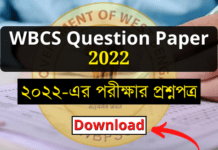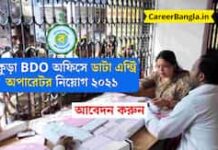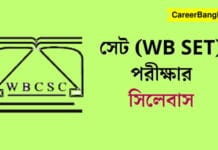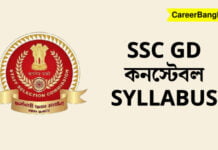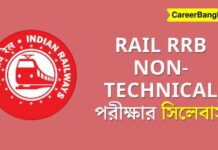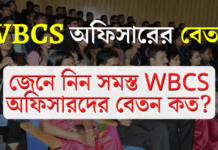UGC (University Grants Commission) – এর তত্ত্বাবধানে প্রতি বছর সমগ্র ভারতবর্ষব্যাপী ‘NET’ অথবা National Eligibility Test exam হয়। এই পরীক্ষায় পাশ করলে ভারতের বিভিন্ন মহাবিদ্যালয় ও বিশ্ববিদ্যালয়গুলিতে শিক্ষকতা করার সুযোগ পাওয়া যায় অ্যাসিস্ট্যান্ট টিচার হিসাবে এবং যে বছর পরীক্ষা হচ্ছে সেই বছরের নির্ধারিত cut off নম্বর অনুযায়ী সর্বচ্চ নম্বর প্রাপ্ত কিছু পরীক্ষার্থী JRF (Junior Research Fellowship) -এর সার্টিফিকেট পান।
NET পরীক্ষাটিকে ২টি Paper- এ ভাগ করা হয়। PAPER-1 এর বিষয়বস্তু হল General Paper Of Teaching(GTA) ও PAPER-2 তে থাকে বিষয় ভিত্তিক প্রশ্ন, অর্থাৎ যে পরীক্ষার্থী যে বিষয়ের শিক্ষক-শিক্ষিকা হতে ইচ্ছুক তাকে সেই নির্দিষ্ট বিষয়ের উপর ভিত্তি করে PAPER-2 পরীক্ষা দিতে হবে। PAPER-2 র জন্য প্রায় ১০০র বেশি Main Subject নির্ধারন করা হয়েছে। প্রতিটি Subject-কে ১০টি Unit-এ ভাগ করা হয়। UGC-এর নির্দেশিকা অনুযায়ী যে পরীক্ষার্থী যে বিষয় নিয়ে Post Graduation করবে বা করেছে তাকে সেই বিষয়ের উপরেই PAPER-2 এর Exam দিতে হবে। আজ আমরা এখানে এই UGC পরিচালিত নেট (NET/JRF) পরীক্ষার Syllabus নিয়ে আলোচনা করবো।
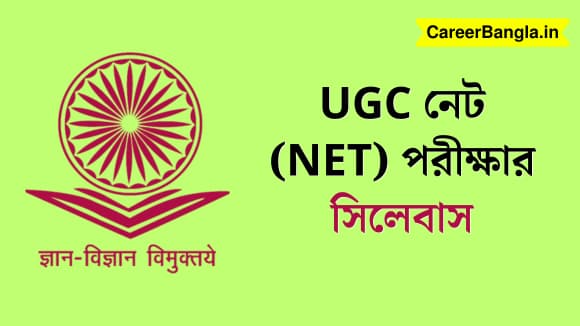

UGC নেট (NET/JRF) Syllabus –
UGC নেট (NET/JRF) Paper-1 Syllabus–
নেট (NET/JRF) exam- এর PAPER-1 এর বিষয়বস্তু হল General Paper Of Teaching (GTA)। এই GTA- এর Syllabus- টিকে যে ১০টি ভাগে বা unit-এ ভাগ করা হয়েছে, সে গুলি হল-
- Teaching Aptitude
- Research Aptitude
- Comprehension
- Communication
- Mathematical Reasoning and Aptitude
- Logical Reasoning (LR)
- Data Interpretation (DI)
- Information Communication Technology(ICT)
- People Development and Environment
- Higher Education System
Unit-I (Teaching Aptitude):
- Teaching: Concept, Objectives, Levels of teaching (Memory, Understanding and Reflective), Characteristics and basic requirements.
- Learner’s characteristics: Characteristics of adolescent and adult learners (Academic, Social, Emotional and Cognitive), Individual differences.
- Factors affecting teaching related to Teacher, Learner, Support material, Instructional facilities, Learning environment and Institution.
- Methods of teaching in Institutions of higher learning: Teacher centered vs. Learner centered methods; Off-line vs. On-line methods (Swayam, Swayamprabha, MOOCs etc.).
- Teaching Support System: Traditional, Modern and ICT based.
- Evaluation Systems: Elements and Types of evaluation, Evaluation in Choice Based Credit System in Higher education, Computer based testing, Innovations in evaluation systems.
Unit-II (Research Aptitude):
- Research: Meaning, Types, and Characteristics, Positivism and Post positivism approach to research.
- Methods of Research: Experimental, Descriptive, Historical, Qualitative and Quantitative methods.
- Steps of Research.
- Thesis and Article writing: Format and styles of referencing.
- Application of ICT in research.
- Research ethics.
Unit-III (Comprehension):
A passage of text be given. Questions be asked from the passage to be answered. (যে কোনো লেখনির একটি অংশ দেওয়া হবে এবং সেই লেখনির উপর ভিত্তি করে প্রশ্ন আসবে।)
Unit-IV (Communication):
- Communication: Meaning, types and characteristics of communication.
- Effective communication: Verbal and Non-verbal, Inter-Cultural and group communications, Classroom communication.
- Barriers to effective communication.
- Mass-Media and Society.
Unit-V (Mathematical Reasoning and Aptitude):
- Types of reasoning.
- Number series, Letter series, Codes and Relationships.
- Mathematical Aptitude (Fraction, Time & Distance, Ratio, Proportion and Percentage, Profit and Loss, Interest and Discounting, Averages etc.).
Unit-VI [Logical Reasoning (LR)]:
- Understanding the structure of arguments: argument forms, structure of categorical propositions, Mood and Figure, Formal and Informal fallacies, Uses of language, Connotations and denotations of terms, Classical square of opposition.
- Evaluating and distinguishing deductive and inductive reasoning.
- Analogies.
- Venn diagram: Simple and multiple use for establishing validity of arguments.
- Indian Logic: Means of knowledge.
- Pramanas: Pratyaksha (Perception), Anumana (Inference), Upamana (Comparison), Shabda (Verbal testimony), Arthapatti (Implication) and Anupalabddhi (Non-apprehension).
- Structure and kinds of Anumana (inference), Vyapti (invariable relation), Hetvabhasas (fallacies of inference).
Unit-VII [Data Interpretation (DI)]:
- Sources, acquisition and classification of Data.
- Quantitative and Qualitative Data.
- Graphical representation (Bar-chart, Histograms, Pie-chart, Table-chart and Line-chart) and mapping of Data.
- Data Interpretation.
- Data and Governance.
Unit-VIII [Information Communication Technology(ICT)]:
- ICT: General abbreviations and terminology.
- Basics of Internet, Intranet, E-mail, Audio and Video-conferencing.
- Digital initiatives in higher education.
- ICT and Governance
Unit-IX (People Development and Environment):
- Development and environment: Millennium development and Sustainable development goals.
- Human and environment interaction: Anthropogenic activities and their impacts on the environment.
- Environmental issues: Local, Regional and Global; Air pollution, Water pollution, Soil pollution, Noise pollution, Waste (solid, liquid, biomedical, hazardous, electronic), Climate change and its Socio-Economic and Political dimensions.
- Impacts of pollutants on human health.
- Natural and energy resources: Solar, Wind, Soil, Hydro, Geothermal, Biomass, Nuclear and Forests.
- Natural hazards and disasters: Mitigation strategies.
Environmental Protection Act (1986): National Action Plan on Climate Change, International agreements/efforts -Montreal Protocol, Rio Summit, Convention on Biodiversity, Kyoto Protocol, Paris Agreement, International Solar Alliance.
Unit-X (Higher Education System):
- Institutions of higher learning and education in ancient India.
- Evolution of higher learning and research in Post Independence India.
- Oriental, Conventional and Non-conventional learning programmer in India.
- Professional, Technical and Skill Based education.
- Value education and environmental education.
- Policies, Governance, and Administration.

